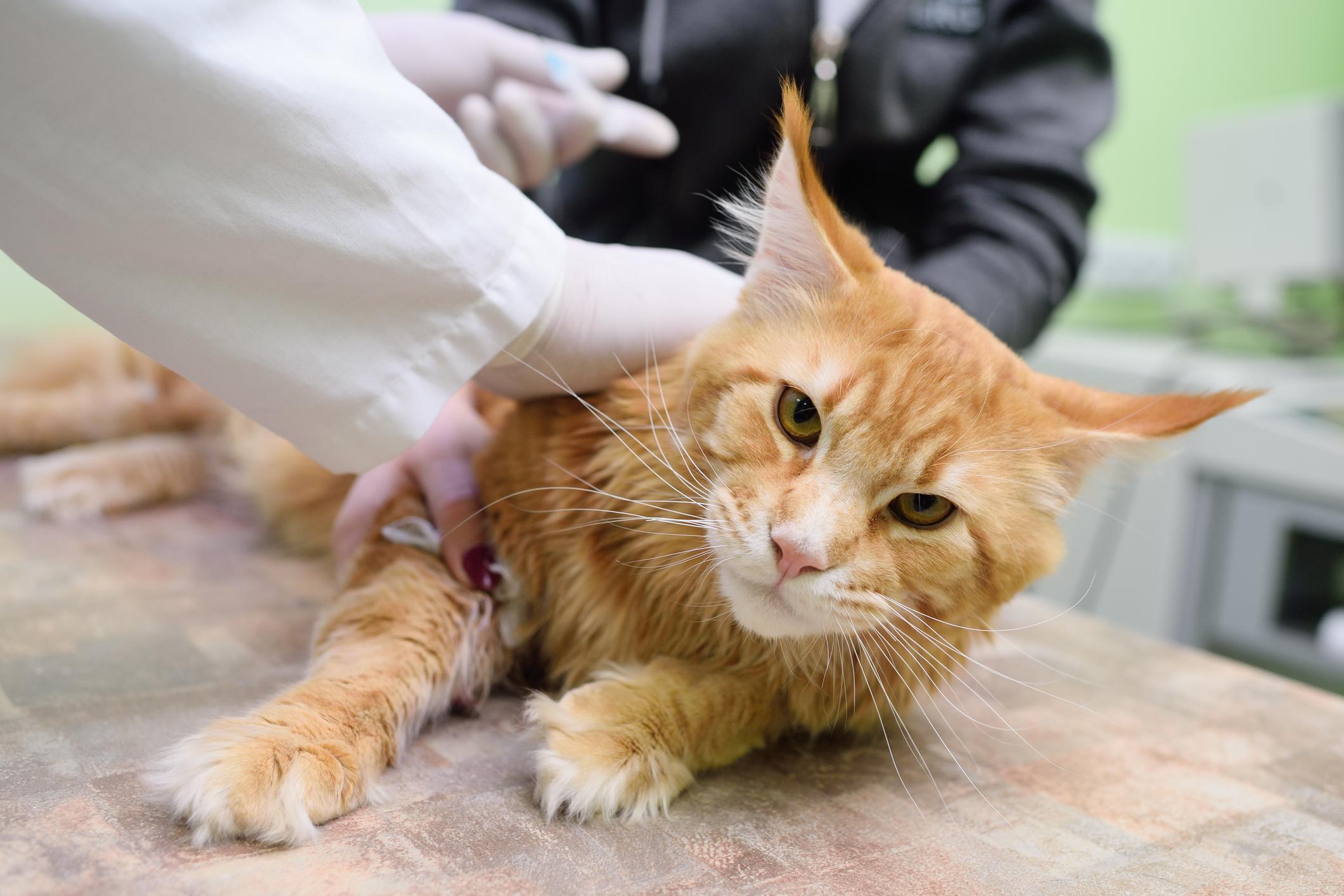Leukopenia in Cats - Low White Blood Cells Count



See files for Cats
Leukopenia is a decrease in the number of leukocytes. Leukocytes, also called white blood cells, are important defense cells involved in innate immunity. They are the first cells to attack the infectious agents that threaten cats' bodies. Cats have five types of leukocytes: neutrophils, lymphocytes, eosinophils, basophils, and monocytes. When the number of these cells decreases, there is an increased risk of infections and other health problems.
The following AnimalWised article explains what leukopenia is in cats, how it is diagnosed, and how to treat it.
What is leukopenia in cats?
Leukopenia is when the white blood cell count is below normal, which corresponds to a value below 2.87 – 17.02 K/μL. Let us take a closer look at the values of individual types of leukocytes in cats, as well as their functions:
- Neutrophils: normal values in cats range from 2.30 to 10.29 K/μL. These leukocytes are involved in microbicidal activity and phagocytosis, as they are the first leukocytes to reach a site of infection. They have an average life of about 10 hours.
- Lymphocytes: normal values in cats range from 0.92 to 6.88 K/μL. They are responsible for the cell-mediated and humoral immune response, having a longer average life than other leukocytes. They are derived from lymphoid tissues such as the spleen, thymus, and lymph nodes.
- Monocytes: normal values in cats range from 0.05 to 0.67 K/μL. They are the largest white cells and as part of the vertebrate innate immune system, monocytes influence the adaptive immune response and exert tissue repair functions.
- Eosinophils: normal values in cats range from 0.17 to 1.57 K/μL. They contain eosinophil cytoplasmic granules and are associated with allergic or parasitic processes.
- Basophils: normal values in cats range from 0.01 to 0.26 K/μL. They contain histamine and heparin in their inner round granules and act as primary mediators in inflammatory processes and hypersensitivity.
Symptoms of leukopenia in cats
Symptoms of leukopenia may vary depending on the underlying condition. Please note that the following list of symptoms is not exhaustive. Therefore, you should immediately consult a veterinarian as soon as you notice any of the following symptoms:
- Fever
- Anorexia
- Weight loss
- Depression
- Ulcers in the mouth
- Mucus or cysts in the feces
- Diarrhea of the small intestine
- Vomiting
- Dehydration
- Pale gums
- Lethargy and weakness
- Tumors or collections
- Changes in behavior
- Seizures
You might be interested in this other article, where we talk about all the reasons why your cat might lose weight.
Causes of leukopenia in cats
Leukopenia in cats can be caused by various mechanisms and is not always a symptom of disease. Leukopenia can occur when the bone marrow produces less blood due to infection, tumors, or toxic processes. Similarly, in acute inflammation, where leukocytes are needed immediately, there may be an increase in white blood cell consumption.
To better understand the variety of causes of low leukocyte levels in cats, let us look at some examples:
- Neutropenia: is a decrease in the number of white blood cells that can occur as a result of a number of reasons, such as anticancer drugs. These drugs work by killing rapidly multiplying cells in the body, both good and bad. These drugs kill both cancer cells and healthy white blood cells. It can also be a result of diseases such as feline leukemia virus, feline immunodeficiency virus, feline panleukopenia, or salmonella infections.
- Lymphopenia: is a disorder in which the blood does not have enough white blood cells. The main causes are viral infections such as feline panleukopenia virus, acute systemic infections, immunosuppressive therapy, hereditary immunodeficiency, or lymphagiectasia.
Both alterations can have, as a primary or secondary cause, prolonged stress. This stress leukogram is usually manifested by an increase in the synthesis of endogenous corticosteroids. This often corresponds to a stressful situation, since their increased internal synthesis is understood as the organism's response to an inflammatory process due to organic stress.
You may also be interested in this other article, where we discuss how to tell if a cat is stressed.
Diagnosis of leukopenia in cats
Low blood cell counts in cats are diagnosed by a blood test. An accurate diagnosis can be made by measuring the total amount of white blood cells and the numbers of each species to determine the degree of leukopenia.
Inform your veterinarian of the nature, severity, and duration of your cat's symptoms, as well as any medications your cat is currently taking. Physical examination of the animal and its medical history are essential to obtain data on symptoms and changes in recent months that may indicate a causative process of leukopenia in cats.
Depending on the suspected cause, additional diagnostic tests may be required. Serologic tests are also usually performed at diagnosis to find a possible infectious agent.
You may also be interested in this other article where we talk about cancer in cats, the different types, symptoms, and treatment.

Treatment of leukopenia in cats
Leukopenia is treated by treating the underlying cause.
If it is determined that leukopenia is a consequence of medical treatment, this treatment should be reviewed, modified, or discontinued, depending on the case and the degree of benefit-risk ratio.
If the decrease in leukocytes is secondary to a disease, it must be specifically treated. It is important to control the symptoms and stabilize the animal with the drugs indicated by the specialist if it is caused by feline retroviruses or feline panleukopenia viruses. Furthermore, it is essential to treat any infections, opportunistic diseases, or secondary diseases caused by immunosuppression.
How to prevent leukopenia in cats
The best way to prevent low leukocyte levels in cats, or at least detect them early, is through routine veterinary examinations. Routine exams monitor your cat's leukocyte levels and detect any changes over time. To prevent infectious diseases that cause leukopenia in cats, cats should be routinely vaccinated when they are young.
Finally, keep in mind that some of these diseases that cause leukopenia in cats, particularly feline parvovirus and feline leukemia, may be contagious to other cats. Any infected cat must be isolated to prevent spread of the disease.
This article is purely informative. AnimalWised does not have the authority to prescribe any veterinary treatment or create a diagnosis. We invite you to take your pet to the veterinarian if they are suffering from any condition or pain.
If you want to read similar articles to Leukopenia in Cats - Low White Blood Cells Count, we recommend you visit our Other health problems category.
- Rebar, A.H. (2003). Interpretation of the canine and feline hemogram. Available at: http://www.vetpraxis.net/wp-content/uploads/2015/09/Interpretaci%C2%A2n-del-Hemograma-Canino-y-Felino.pdf
- Rivas, R. (2022). Interpretation of the white series in dog and cat blood counts . Available at: https://cuasveterinaria.es/laboratorio/interpretacion-de-la-serie-blanca-en-hemogram-de-perro-y-gato/






